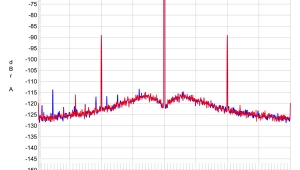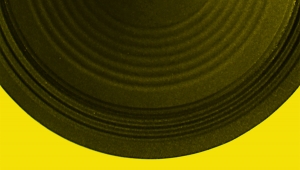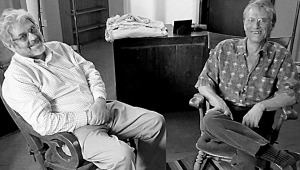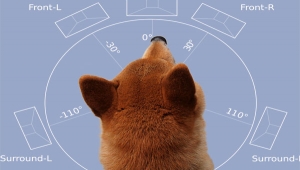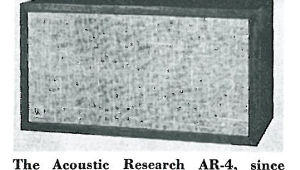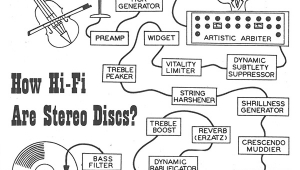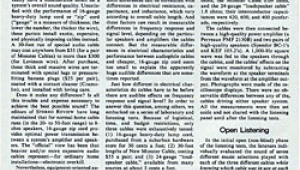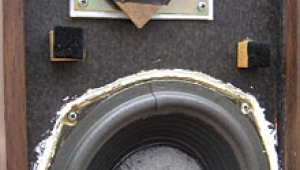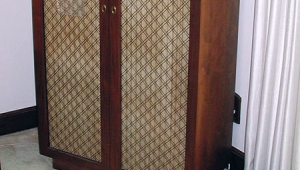| Columns Retired Columns & Blogs |
The Musician in the Middle Page 2
Professional instrumentalists and vocalists are trained both in the conservatory and through practical experience to produce big, resonant, clear sounds in order successfully to project to the "last row in the house." They accomplish this by adding an edge, or "zing," to their sounds that is clearly audible up close, but not at a distance. If one were to sit in the middle of our wind section during a concert, the visitor would probably find the unfocused and unrefined quality of the sound to be distracting and unmusical. If microphones are placed too close to the instruments, the perspective will not only be incorrect, but the musicians' sonic intentions will be misrepresented.
There are other problems which confront the recording engineer that are often dealt with in a less than insightful manner. For example, I'd like to take a look at the matter of "the microphone behind the French horns syndrome." Many engineers, in an effort to clearly delineate the horns within the orchestral soundstage, place a microphone directly behind the bells of the instruments and pan the mike placement to the correct point in space. While it can be very effective (London/Decca has had great success with this approach), the indiscriminate use of this technique can cause problems. First, the french horn is a reflecting instrument, inasmuch as the sound emanates from the rear, but is heard from the front. When microphones are placed directly behind the instrument, the quality of sound will not only be unnaturally open and hard, but the pitch will be higher than is heard from the front (due to something like the doppler effect). Although this pitch difference is not large, it is enough to cause degradation of sound and an unclear pitch center from the horn section (especially if the rear presence microphone is used at too high a gain, or is opened and closed during the performance).
The harp and tympani are also regularly "done in" by insensitive engineering. Both produce noises audible in their vicinity from the internal mechanisms and pedals, and, when overly miked (to gain "clarity" and "presence"), sound more like a boiler factory than musical instruments.
There is another sonic phenomenon that most recording engineers do not seem to recognize: many of the finest instruments seem louder at a distance than up close. The reader might find this hard to believe, but it is indeed the case. One of my colleagues in the National Symphony plays on a beautiful Amati double bass, which sounds rather dull and unfocused up close. At a distance, however, this particular instrument has a huge, resonant sound with incredible bass impact. The same is true of my Fox contrabassoon. To me, and to other musicians in the immediate vicinity, the tone sounds small and covered. But I have been told that, in the hall, my instrument can be clearly heard through full orchestral tuttis, having the same impact as an organ pedal. My point is simple: orchestral instruments are meant to be heard from a distance, not from two feet away.
And, of course, we all know about the ludicrous balances so prevalent in solo concerto recordings. I can remember the time we recorded a well-known romantic violin concerto with a prominent American artist and recording company (names withheld to protect the guilty). The playbacks were strange enough, but the finished product was beyond bad taste. The solo violin appeared to be nine feet across and louder than the entire brass section playing fortissimo; the orchestral strings sounded as if they had phoned in their contribution. While I am sure that the soloist had some influence in the final mix, the grossly overblown, unnatural balances completely negated all of the fine nuances we had worked so hard to achieve.
At this point the logical question is, why do so many recording companies resort to the complexities and related problems of multi-miked and multi-tracked recordings? Some cynics would say that the engineers are intentionally intimidating the technically ignorant performers so as to be able to place their own stamp on the final product, thereby justifying their existence. While these critics may have a point, the real reasons are simply economic. With the cost of recording sessions so outrageous (especially in the US), all musical information must be covered in the least possible time, with the assurance that all has been put down on tape. If one is running a simple two-channel two-mike mix, any deficiencies in the balances not recognized at the session cannot be corrected after the fact. Ultimately, it is probably better to have the more natural perspective, but with the deficient acoustics in many recording locations, the minutes ticking away, and the dollars mounting up fast, one can hardly blame the producer for taking the less artistically valid, but economical, way out.
Just as it takes two to tango, we cannot place all of the blame for poor recordings at the feet of engineers and producers. The lack of any technical knowledge regarding the recording process on the part of the performing artists, especially soloists and conductors, is appalling. Many conductors will complain that their intentions are not properly carried out by the recording team, and that the engineers are insensitive to their artistic goals. But most of these same individuals display no desire to involve themselves in the technical process, thereby negating any possibilities of their understanding the various problems that confront the engineers. With their heads in the clouds, displaying the required arrogance which seems to be part of the classic conductor's profile, they refuse to stoop to the mundane, and thereby forfeit a significant amount of artistic control.
Having participated in many recording sessions, I have viewed the uneasy relationship between performers and technicians for years. Not unlike that between labor and management, the mutual distrust between the opposing parties often leads to many more problems and misunderstandings than necessary, resulting in an inferior product. Until the time that both parties decide to lend more of an ear to one another, and attempt to see the other's point of view, I fear that the future of quality symphonic recordings is grim indeed.
- Log in or register to post comments

